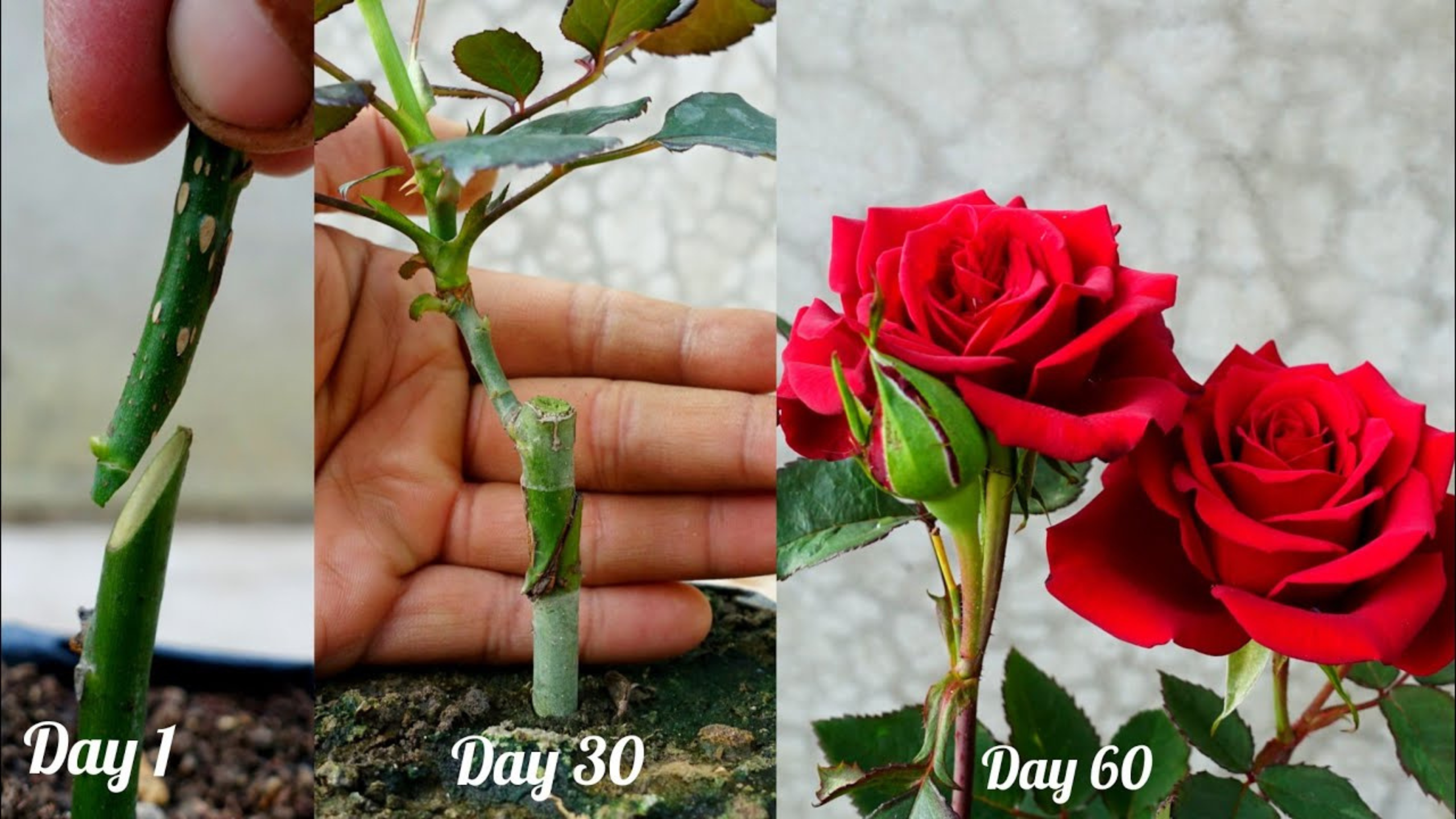Grafting roses is a rewarding gardening technique that allows you to grow multiple rose colors on a single plant. Whether you’re aiming for a stunning multi-colored display or simply want to experiment with new varieties, grafting is a practical and creative solution.
This guide walks you through the entire process—from timing and tools to aftercare—making it easy for beginners and seasoned gardeners alike. Let’s dive into the art of rose grafting and learn how to give your garden a vibrant new look.
When to Graft: Choose the Right Season
Timing is everything.
The best time to graft roses is during the summer, specifically when your rose bushes are in active growth. At this stage, the plant’s sap is flowing vigorously, which increases the chances of successful grafting.
Why summer?
The warmer weather encourages rapid healing and helps the grafted stem bond more efficiently with the rootstock. Avoid cold or dormant seasons, as the plant’s slowed metabolism can hinder the process.

Prepare Your Tools: Sanitize for Success
Don’t skip this step!
Clean, sharp tools are essential to avoid damaging your plants or spreading disease.
What you’ll need:
Grafting knife or sharp pruning shears
Rubbing alcohol or methylated spirits (also known as alcohol de quemar)
Clean cloth or paper towel
How to clean your tools:
Wipe the blades thoroughly with alcohol before and after each cut. This helps prevent bacterial and fungal infections, which could compromise your graft.
Selecting and Preparing the Scion (Cutting)
What is a scion?
A scion is the piece of rose stem you want to graft onto the host plant (also known as the rootstock). Choose stems that are healthy, disease-free, and contain at least three healthy buds.
How to prepare the scion:
- Cut a stem about 6–8 inches long.
- Trim the leaves but leave the buds intact.
- Shape the bottom end into a “V” wedge using a clean knife. This shape allows it to fit snugly into the rootstock’s cut and maximizes contact for sap flow.
Choose the Right Rootstock
What is a rootstock?
The rootstock is the existing rose plant that will host your new cutting. Ideally, use a two-year-old stem from a strong, disease-resistant plant.
Preparing the rootstock:
Select a sturdy, straight stem.
Make a vertical cut about 1 cm deep using your knife. This is where the “V” wedge of your scion will be inserted.
Tip: Try to match the thickness of the scion and the rootstock as closely as possible for the best results.
Grafting: Joining the Scion to the Rootstock
Now comes the exciting part—joining the two stems.
Steps:
- Insert the “V”-shaped base of your scion into the cut you made in the rootstock. It should fit tightly without wobbling.
- Wrap the graft union firmly with grafting tape or parafilm to hold the scion in place and seal in moisture.
Why the wrap matters:
This protective layer helps prevent the entry of pests, bacteria, and air pockets that could dry out the graft. Keep it in place until the graft has visibly bonded and new growth begins.
Post-Graft Care: Nurture for Strong Growth
Proper aftercare ensures your graft thrives. Follow these steps to give your roses the best chance at success:
- Water generously: Keep the soil moist (but not waterlogged) for the first 15 days to support healing.
- Monitor growth: New shoots may appear early. Prune the first few to direct the plant’s energy into strengthening the graft.
- Remove the tape: Once the scion begins growing independently—usually after 3–4 weeks—carefully remove the grafting tape.
- Soil and nutrition: Use a balanced mix of garden soil and compost to nourish the plant. Roses love rich, well-drained soil.
- Light and air: Plant in a spot that receives at least 6 hours of sunlight daily and has good airflow to prevent fungal problems.
Final Tips for Beautiful Multi-Colored Roses
Label your grafts: If you’re adding multiple colors, label each one to keep track of your varieties.
Start small: Begin with one or two grafts until you’re confident in your technique.
Practice patience: Some grafts may take longer to show results. Be patient and give your roses time to adapt.
By following these steps, you’ll not only learn a valuable gardening skill but also enjoy a stunning display of roses in different hues—all from the same plant.


order amoxicillin online – https://combamoxi.com/ buy cheap amoxicillin
buy fluconazole without prescription – click diflucan oral
cenforce price – cenforce rs order cenforce generic
cialis coupon 2019 – ciltad generic cialis canada
what happens if you take 2 cialis – https://strongtadafl.com/# generic tadalafil canada
viagra sale sa – https://strongvpls.com/ legal order viagra online canada
The thoroughness in this draft is noteworthy. ciclo de synthroid
Thanks on sharing. It’s outstrip quality. prednisone 20 milligrams
Thanks for putting this up. It’s okay done. https://ursxdol.com/cenforce-100-200-mg-ed/
This is a topic which is forthcoming to my verve… Diverse thanks! Quite where can I upon the acquaintance details for questions? https://prohnrg.com/product/metoprolol-25-mg-tablets/
This is the big-hearted of writing I truly appreciate. https://aranitidine.com/fr/ivermectine-en-france/
Greetings! Jolly gainful par‘nesis within this article! It’s the crumb changes which liking turn the largest changes. Thanks a lot towards sharing! https://ondactone.com/simvastatin/
This is the stripe of topic I have reading.
levofloxacin 250mg uk
More articles like this would make the blogosphere richer. http://zqykj.com/bbs/home.php?mod=space&uid=302444
buy dapagliflozin 10mg for sale – https://janozin.com/ dapagliflozin 10 mg over the counter
purchase orlistat generic – on this site buy xenical 60mg sale
I am in fact happy to glance at this blog posts which consists of tons of of use facts, thanks object of providing such data. http://iawbs.com/home.php?mod=space&uid=916778
You can keep yourself and your dearest nearby being wary when buying prescription online. Some pharmaceutics websites function legally and put forward convenience, reclusion, cost savings and safeguards as a replacement for purchasing medicines. buy in TerbinaPharmacy https://terbinafines.com/product/trental.html trental
This is the gentle of scribble literary works I rightly appreciate. TerbinaPharmacy
With thanks. Loads of expertise!
https://t.me/s/dragon_money_mani/30